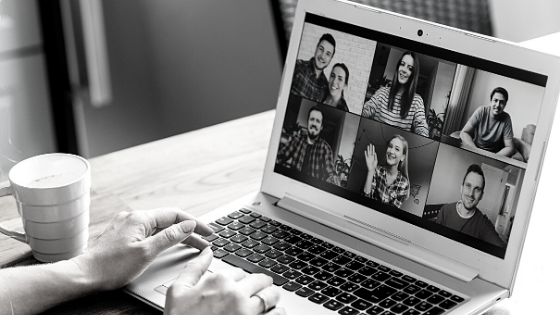XRHealth is Australia’s first fully remote telehealth physiotherapy clinic that utilises Virtual Reality (VR) Technology to connect patients with clinical services. Not only do we treat our patients remotely, but our Corporate team also operates remotely across Australia. As a lot of you know, a large proportion of businesses have moved to a remote working model this year (whether by choice or otherwise). When considering XRHealth’s launch in Australia back in February 2020, we considered the current climate balanced with what would enable our organisation to achieve long-term effectiveness.
Through this structure, we knew we could attract the best talent, regardless of their location, but that we would also be able to retain our talent as their lives evolved. Overall, this helps our organisation achieve its mission which is to improve patient health overall and improve the accessibility to health services globally.
So how do we do this?

We connect
I am sure that we can all agree that an integral benefit of working in a team is the social connections this brings. Working remotely makes this much harder for individuals to feel connected to their broader functional team. At XRHealth, we have tried to address this by ensuring that we hold entertaining and engaging social activities. For example, we have held Yoga sessions over Microsoft Teams, and set up chat channels where people can share photos of pets or pictures of their gardens (and other iso-friendly activities). Another effective method we have used is holding regular team meetings where everyone can be involved and kept abreast of changes throughout the company. We even encourage people to use their webcams for meetings between colleagues (where possible) so we can foster that “in-person” feeling that we have lost by working remotely. Once these current COVID restrictions end, this focus will continue, and we will begin holding team events in person across the states we have employees situated.
We articulate our vision
What does your organisation do? Can your teams articulate this?
With the added distance between your team members, it is much easier for them to get lost in their activities, rather than being able to see the bigger picture the business is trying to achieve. Work with your people to define what the vision of the company is. It does not need to be specific, but it needs to unique, forward-focused, motivating, purpose-driven and inspiring. Some great examples of other companies are:
- Facebook: to give people the power to build community and bring the world closer together
- Twitter: give everyone the power to create and share ideas and information instantly without barriers.
- Microsoft: to help people and businesses throughout the world realise their full potential
You can see how these statements help align their team members activities, and the projects and initiatives they may work on, to a broader company purpose. It inspires and guides team members on what kind of activities the company wants to pursue.
We use technology consistently
Organisations these days have access to Microsoft Teams, Skype, Zoom, Slack and a multitude of other collaboration tools. We all get excited about new toys and systems to learn. Still, human nature leads us to jump from platform to platform without realising that, according to Heidi Grant Halvorson, a motivational psychologist and author of the HBR Single Nine Things Successful People Do Differently, “it takes us over six months to become proficient in the use of new technology and to maximise the productivity gains these collaboration tools produce”. Having too many systems, or systems that conflict, can result in some organisations losing 20-30 percent in revenue each year, according to market research firm IDC.
We ask our people
We thrive on feedback. Businesses often listen directly to their customers for feedback on their products or user experiences, but neglect their internal teams. XRHealth has recognised that the experience of our team members provides us with information that is just as valuable. Feedback has enabled us to identify bottlenecks in processes and better understand what structure will best serve our patients.
We understand it may change
Just like our team members, as our business grows and develops it evolves. Its needs will change, and there is a chance that our strategy won’t be effective anymore. Part of remaining relevant and practical is knowing when something is not working! We may even reach a size where having a co-working space, or a similar in-person collaboration space will be a more effective way for us to remain cohesive, and on target to achieve our growth goals.
Businesses operating remotely is not a new phenomenon. Still, with our dynamic world, it is vital to pay attention to the changes in the technology landscape, and to continuously endeavour to better understand your people, after all – without people there is no business.





















